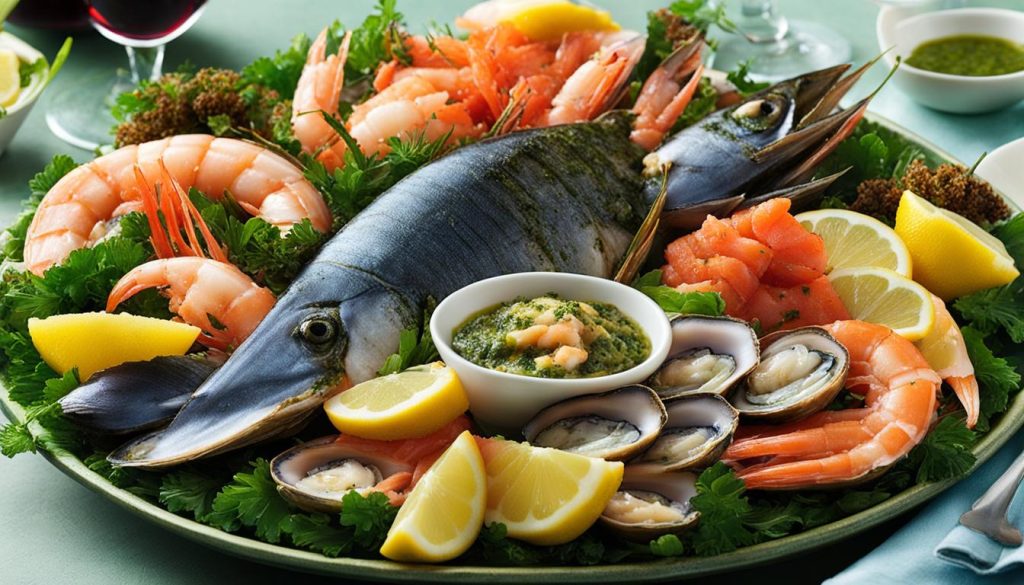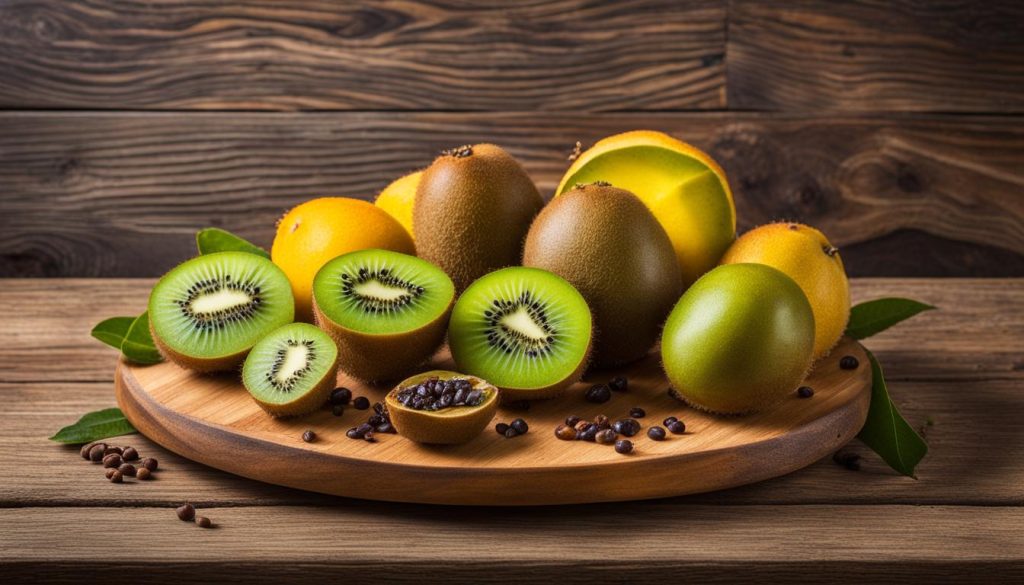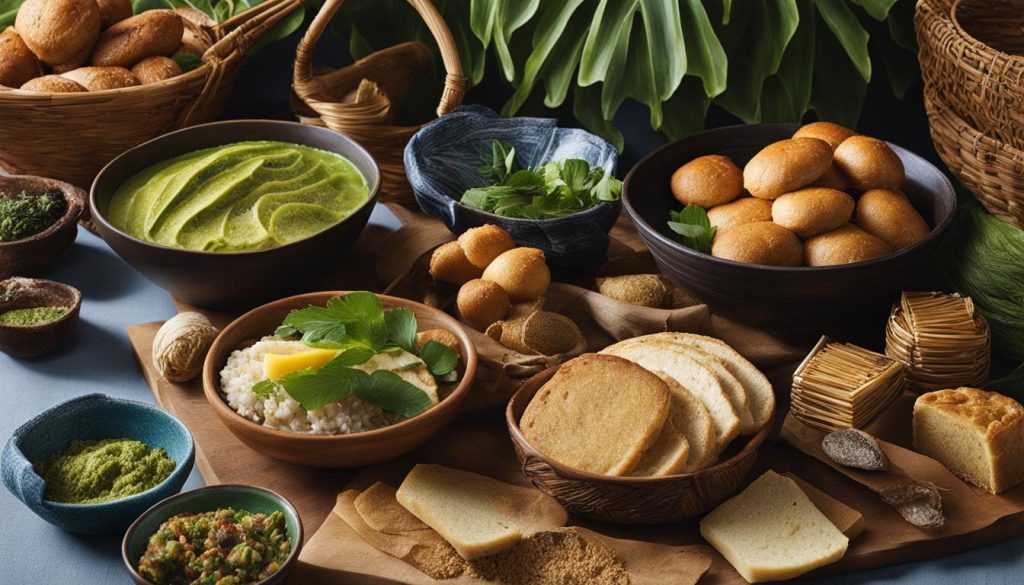As a food enthusiast, I am always intrigued by the historical roots of different cuisines. Today, I invite you to join me on a culinary journey to explore the diverse and delicious traditional foods of New Zealand. From indigenous ingredients to Maori culinary traditions, this country’s historical culinary heritage is a tapestry of flavors and cultural influences.
New Zealand’s rich food culture is deeply intertwined with its history. The traditional dishes that have been passed down through generations are a reflection of the indigenous Maori people and the European settlers who arrived centuries ago. These dishes embody the connection to the land and sea that is at the heart of New Zealand’s identity.
Traditional Maori recipes showcase the Maori people’s close relationship with nature and their use of native ingredients. From kai moana (seafood) to rātā (manuka) honey, these recipes celebrate the abundance of New Zealand’s natural resources. The Maori cooking method known as hāngi is a fascinating tradition that involves cooking food using heated rocks buried in a pit oven.
But New Zealand’s culinary heritage extends beyond Maori traditions. The country’s coastal waters offer a wide variety of seafood delicacies, such as Bluff oysters and Green-Lipped Mussels. New Zealand pies, with their savory fillings, have evolved into an iconic dish that reflects the country’s agricultural heritage. And let’s not forget about the high-quality lamb that New Zealand is famous for.
To give you a glimpse of the captivating flavors and dishes of New Zealand, I have put together this comprehensive guide. Join me as we delve into the historical foods of New Zealand, discover traditional recipes, and learn about the indigenous ingredients that make this cuisine so unique.
Key Takeaways:
- Traditional New Zealand cuisine is influenced by Maori culinary traditions and European settlers.
- Maori recipes incorporate indigenous ingredients and cooking methods like hāngi.
- New Zealand is renowned for its seafood delicacies, including Bluff oysters and Green-Lipped Mussels.
- New Zealand pies and lamb are iconic dishes that showcase the country’s culinary heritage.
- Indulge in the unique flavors of Māori cuisine, such as the boil up and Kumara soup.
Maori Culinary Traditions
The Maori people have a deep culinary history that is intimately connected to their culture and natural resources. Their traditional Maori recipes are a testament to their rich food heritage, reflecting the abundance of native New Zealand ingredients and the cultural significance of food in Maori society. These culinary traditions offer a glimpse into New Zealand’s food history and the unique flavors that have been passed down through generations.
One of the key components of Maori cuisine is the use of native plants and ingredients. From kai moana (seafood) sourced from the surrounding oceans to rātā (manuka) honey known for its distinct flavor, Maori recipes celebrate the bounty of New Zealand’s natural resources. Traditional dishes also include renewa bread, a type of bread made from the pith of the cabbage tree, and various meats such as pork.
The Maori people have a deep respect for the land and sea, and this is reflected in their culinary traditions. They have developed a sustainable approach to gathering and using food, ensuring the preservation of their resources for future generations.
The Maori cooking method known as hāngi is a remarkable culinary tradition that has been passed down through generations. It involves cooking food using heated rocks buried in a pit oven. This slow and gentle method of cooking infuses the food with a smoky, earthy flavor and is often used for special occasions and celebrations.
Maori Culinary Traditions in Action
To truly understand the importance of Maori culinary traditions, one must experience the dishes firsthand. Here is a glimpse into some of the traditional Maori recipes:
- Kumara Roast: A delicious dish made with roasted sweet potatoes, seasoned with herbs and spices.
- Boil Up: A hearty soup/stew featuring a combination of meats, vegetables, and dumplings, cooked together to create a comforting and nourishing meal.
- Hangi: A feast prepared using the traditional hāngi cooking method, showcasing an array of meats, vegetables, and seafood cooked to perfection.
These dishes not only tantalize the taste buds but also offer a glimpse into the deep cultural heritage and ancestral connections of the Maori people.
The Maori culinary traditions highlight the unique flavors and ingredients that are integral to New Zealand’s food history. From the rich coastal waters to the fertile land, Maori cuisine tells a story of sustainability, cultural preservation, and the deep connection between the Maori people and their natural surroundings.
https://www.youtube.com/watch?v=CepkKUzrrWA
New Zealand Seafood Delicacies
New Zealand is renowned for its exquisite seafood offerings, sourced from the bountiful coastal waters. From delectable Bluff oysters to succulent Green-Lipped Mussels, the native seafood of New Zealand is cherished for its exceptional quality and flavors.
Bluff oysters, in particular, are highly coveted for their unique taste and texture. These plump and juicy oysters are harvested from the pristine waters of Bluff, a small town located in the South Island.
The Green-Lipped Mussels, a favorite among locals and visitors alike, boast tender and sweet meat. These mussels are often prepared in various dishes, showcasing their delicate flavors and versatility.
In addition to Bluff oysters and Green-Lipped Mussels, New Zealand offers a wide array of other notable seafood delicacies. Snapper, crayfish, paua (abalone), hoki, kina sea urchins, and pāua (sea snails) are just a few examples of the diverse range of seafood available.
Indulging in these native seafood delicacies allows you to savor the authentic flavors of New Zealand and experience the culinary heritage of the country. Whether enjoyed in traditional New Zealand dishes or prepared in innovative ways, New Zealand seafood promises a memorable gastronomic adventure.

Sample of New Zealand Seafood:
| Seafood | Description |
|---|---|
| Bluff Oysters | Sought-after delicacy known for its unique taste and texture |
| Green-Lipped Mussels | Native favorite with sweet and tender meat |
| Snapper | Flavorful fish with moist, white flesh |
| Crayfish | Lobster-like shellfish with delicate and sweet meat |
| Paua (Abalone) | Irresistible mollusk with a vibrant blue and green shell |
| Hoki | Popular white fish with delicate flavor and flaky texture |
| Kina Sea Urchins | Rich and creamy delicacy harvested from coastal waters |
| Pāua (Sea Snails) | Distinctive shellfish with vibrant colors and tender meat |
New Zealand Pies and Lamb
New Zealand pies are a beloved Kiwi dish that encompasses the essence of traditional New Zealand cuisine. These savory pies have become an iconic part of the country’s culinary landscape, reflecting the historical influences, agricultural heritage, and boundless creativity of New Zealand’s food culture. Indulging in a New Zealand pie is like taking a bite out of the nation’s rich history and cultural diversity.
A New Zealand pie is a handheld delight, consisting of a flaky pastry crust and a hearty filling that can range from beef, chicken, and pork to vegetarian options like cheese and vegetable medleys. The fillings are often seasoned with a blend of herbs and spices, providing a burst of flavor in every bite.
What makes New Zealand pies truly special is the attention to detail and quality ingredients that go into their creation. Each pie is carefully crafted, with a focus on freshness and local produce. Whether it’s a classic steak and cheese pie or a gourmet lamb and rosemary creation, you can expect a satisfying and flavorful experience.
“New Zealand pies are a delicious expression of the country’s culinary heritage, offering a taste of tradition with every bite.”
The Iconic Lamb Roast
When it comes to traditional New Zealand dishes, the lamb roast takes center stage. New Zealand lamb is world-renowned for its exceptional quality and flavor, making it a staple in classic recipes.
The lamb roast is a quintessential Kiwi dish, perfect for gathering friends and family together. It typically consists of succulent cuts of lamb, seasoned with a blend of herbs and spices, and roasted to perfection. The result is a tender and flavorsome meat that melts in your mouth.
In addition to the mouthwatering lamb, a typical New Zealand lamb roast is accompanied by a medley of roasted vegetables, such as potatoes, pumpkin, and kumara (sweet potatoes). This hearty and wholesome meal is often served with mint sauce or gravy, further enhancing the flavors.
“The lamb roast is a timeless classic that showcases the culinary expertise and agricultural heritage of New Zealand.”
| Pie Flavor | Description |
|---|---|
| Steak and Cheese | A classic New Zealand favorite, combining tender chunks of beef with melted cheese in a rich gravy. |
| Minced Beef | A savory pie filled with seasoned minced beef, onions, and gravy, delivering a comforting and satisfying taste. |
| Chicken and Mushroom | A creamy and flavorful filling of tender chicken and earthy mushrooms, offering a delightful combination of ingredients. |
| Veggie Delight | A vegetarian option filled with a medley of fresh vegetables, herbs, and spices, showcasing the vibrant flavors of New Zealand produce. |
With their irresistible flavors and endless variety, New Zealand pies have become a cherished part of the Kiwi culinary experience. Whether enjoyed as a quick snack or a filling meal, these savory treats offer a delicious taste of tradition and innovation.
And let’s not forget the succulent lamb roast, a dish that epitomizes New Zealand’s agricultural heritage and culinary prowess. From its tender meat to the mouthwatering roasted vegetables, the lamb roast is a true testament to New Zealand’s love affair with good food.
Māori Cuisine in New Zealand
Māori cuisine holds a significant place in New Zealand’s culinary landscape, deeply rooted in the traditions and heritage of the indigenous Māori people. The cuisine reflects a harmonious blend of flavors, techniques, and ingredients passed down through generations.
Traditional Māori dishes showcase the region’s bounty of local produce, meats, and seafood. One of the most iconic Māori dishes is the boil up, a hearty soup or stew that brings together a medley of ingredients such as meats, vegetables, and dumplings. This comforting dish is a staple in Māori households and embodies the essence of communal eating.
Another beloved Māori dish is Kumara soup, a nourishing soup made from kumara, a sweet potato variety indigenous to New Zealand. The soup is prepared by combining roasted kumara with spices and other aromatic ingredients, resulting in a rich and flavorful dish.
Māori Culinary Traditions
Māori culinary traditions go beyond the preparation of dishes. The Māori people have a deep connection to the land and sea, and this connection is reflected in their approach to food. Gathering ingredients from the bush, the forest, and the ocean is an integral part of Māori food culture.
For the Māori, food is not simply sustenance but a way to honor their ancestors, express creativity, and strengthen social bonds. Māori culinary traditions encompass not only the preparation of meals but also the ceremonial aspects associated with harvesting and cooking certain ingredients.
By preserving and celebrating traditional Māori dishes, New Zealand pays homage to its indigenous culture and showcases the diversity and richness of its culinary heritage.
Māori Ingredients
The traditional ingredients used in Māori cuisine are deeply rooted in the resources found in the natural environment of New Zealand. Flavors from the bush and sea play a prominent role in Māori dishes, adding unique tastes and aromas.
Some noteworthy Māori ingredients include flaxseed oil, which holds cultural significance and is used for cooking and medicinal purposes. Mānuka, a native plant with antibacterial properties, is often incorporated into dishes for both its flavor and health benefits.
Pikopiko (fern shoots), pūhā (sow thistle), kawakawa, and kōwhitiwhiti (watercress) are other ingredients commonly used in Māori cuisine. These ingredients not only provide distinct flavors but also showcase the abundance of native plants that have sustained the Māori people for centuries.
As New Zealand embraces its cultural heritage, Māori cuisine continues to thrive and evolve, inviting locals and visitors alike to experience the unique flavors and traditions deeply rooted in the land and people of New Zealand.
Fruit and Desserts in New Zealand
New Zealand is renowned for its exquisite fruits and delectable desserts that showcase the country’s culinary expertise. From refreshing kiwi fruits to unique creations like feijoa, hokey pokey, and lolly cake, there’s a wide range of flavors to indulge in. Let’s explore these delightful treats that tantalize the taste buds of locals and visitors alike!
Kiwi Fruits: A National Treasure
One cannot discuss New Zealand fruits without mentioning the iconic kiwi fruit. These small green fruits are not only a symbol of the country but also a popular export enjoyed around the world. With their vibrant color, refreshing taste, and high nutritional value, kiwi fruits are a must-try when visiting New Zealand. Whether enjoyed on their own or added to salads, smoothies, or desserts, kiwi fruits are a delightful addition to any culinary experience.
Feijoa: A Tropical Fusion
Feijoa, also known as pineapple guava, is a unique fruit that thrives in the New Zealand climate. Its distinctive flavor combines the tropical notes of guava, pineapple, and mint, making it a truly refreshing treat. Feijoa is commonly eaten fresh or used in various culinary creations, such as jams, jellies, and desserts. Its aromatic profile and tangy-sweet taste make feijoa a favorite among locals and a delightful discovery for visitors.
Hokey Pokey: A Sweet Symphony
When it comes to New Zealand desserts, hokey pokey takes center stage. This iconic flavor features crunchy honeycomb toffee pieces blended into creamy ice cream, creating a delightful combination of textures and sweetness. The name “hokey pokey” originates from an old New Zealand term for honeycomb candy, and it has become a beloved treat enjoyed in various forms, including ice cream, chocolate bars, and baked goods. Indulging in hokey pokey is a must for anyone with a sweet tooth.
Lolly Cake: A Colorful Classic
Lolly cake is a beloved New Zealand dessert that combines crushed biscuits, coconut, condensed milk, and colorful lollies (candies). The mixture is shaped into a log and chilled until firm, resulting in a deliciously chewy and visually appealing treat. Lolly cake is a staple at children’s parties, picnics, and afternoon tea gatherings, offering a delightful burst of flavor and a touch of nostalgia for both Kiwis and visitors.

Flavors from the Bush and Sea
New Zealand’s traditional cuisine showcases the country’s unique flora and fauna, with a particular emphasis on Māori ingredients. These indigenous elements not only add distinct flavors to the dishes but also reflect New Zealand’s deep connection to its natural environment.
Māori cuisine incorporates a range of ingredients that are sourced directly from the bush and sea. These include:
- Flaxseed oil: Known for its nutty flavor and high nutritional value, flaxseed oil is often used in Māori cooking. It adds a rich and earthy taste to various dishes.
- Mānuka: Mānuka is a native plant that has multiple culinary uses. Its leaves are often brewed into a tea, while its honey is prized for its unique flavor and medicinal properties.
- Pikopiko (fern shoots): The young shoots of the fern plant, known as pikopiko, are a popular ingredient in Māori cuisine. They have a delicate flavor and are often used in salads or stir-fries.
- Pūhā: Pūhā, or sow thistle, is a wild edible green that is commonly used in Māori cooking. It has a slightly bitter taste and is often featured in soups, stews, and stir-fries.
- Kawakawa: Kawakawa is a native plant with aromatic leaves that are used to season and flavor various dishes. It adds a peppery and zesty taste to meats, soups, and sauces.
- Kōwhitiwhiti (watercress): Watercress, or kōwhitiwhiti, is a leafy green vegetable that grows in freshwater streams and rivers. It has a crisp texture and a slightly spicy flavor, making it a popular ingredient in salads and sandwiches.
These Māori ingredients, such as flaxseed oil, Mānuka, pikopiko, pūhā, kawakawa, and kōwhitiwhiti, not only contribute unique flavors to traditional dishes but also reflect New Zealand’s strong connection to its natural environment.
The utilization of these ingredients not only enhances the taste of the dishes but also keeps alive the culinary traditions that have been passed down through generations. They add depth and authenticity to New Zealand’s traditional cuisine, making it a truly remarkable culinary heritage.
Traditional Foods to Avoid
When it comes to New Zealand seafood consumption, sustainability should be a top priority. While the country offers a wide variety of seafood options, it is essential to be mindful of the impact of fishing practices on the environment and the conservation of endangered species. Here are some traditional New Zealand delicacies that should be avoided due to overfishing or endangerment of the species:
| Seafood to Avoid |
|---|
| Tipa (Scallops) |
| Inanga (Whitebait) |
| Tarakihi |
| Kina (Sea Urchin) |
By being selective in our seafood choices and supporting sustainable fishing practices, we can contribute to the conservation of these precious marine resources. It’s important to prioritize the long-term health of our oceans and ensure the survival of endangered species. Together, we can make a positive impact on New Zealand’s seafood ecosystem.
Conclusion
New Zealand’s culinary heritage is a testament to its rich history and cultural diversity. The traditional foods of New Zealand, influenced by Maori culinary traditions and European settlers, continue to shape the country’s culinary landscape. From mouthwatering Maori delicacies to delectable seafood specialties and unique desserts, the historical foods of New Zealand offer a truly extraordinary and flavorful experience.
Exploring the traditional dishes and ingredients of New Zealand is a journey that allows you to immerse yourself in its rich culinary heritage. From indulging in a Maori hāngi feast cooked in an underground pit oven to savoring the succulent flavors of Bluff oysters and Green-Lipped Mussels, there is an array of flavors waiting to be discovered.
Don’t miss the opportunity to taste New Zealand’s iconic pies, made with savory fillings that reflect the country’s historical influences and agricultural heritage. And be sure to try the renowned New Zealand lamb, known for its exceptional quality and tenderness, in a classic lamb roast.
By embracing the historical foods of New Zealand, you not only satisfy your taste buds but also gain a deeper understanding and appreciation for the country’s cultural roots. So, embark on a culinary adventure and savor the traditional flavors that have made New Zealand’s cuisine truly unique.
FAQ
What are the traditional foods of New Zealand?
The traditional foods of New Zealand encompass a wide variety of dishes influenced by Maori culinary traditions and European settlers. These include indigenous ingredients, seafood delicacies, savory pies, lamb roast, Māori cuisine, and unique desserts.
What are some examples of Maori culinary traditions?
Maori culinary traditions include cooking methods like hāngi, which involves cooking food using heated rocks buried in a pit oven, and traditional Maori recipes such as kai moana (seafood), rātā (manuka) honey, renewa bread, and meats like pork. They also incorporate native plants like bracken fern and cabbage tree.
What are some popular New Zealand seafood delicacies?
New Zealand is known for its diverse seafood delicacies. Some popular options include Bluff oysters, Green-Lipped Mussels, snapper, crayfish, paua (abalone), hoki, kina sea urchins, and pāua (sea snails).
What are New Zealand pies and lamb?
New Zealand pies are savory pastries filled with various ingredients and are a beloved Kiwi dish. They showcase historical influences, agricultural heritage, and creativity. New Zealand is also renowned for its high-quality lamb, which is often featured in traditional dishes like the lamb roast.
What are some traditional Māori dishes?
Traditional Māori dishes include the boil up, a hearty soup or stew made with various ingredients like meats, vegetables, and dumplings. Kumara soup, made from the sweet potato known as kumara, is another delicious and comforting dish in Māori cuisine.
What are some popular fruits and desserts in New Zealand?
New Zealand offers delectable fruits like kiwi fruits, feijoa, and desserts like hokey pokey ice cream and lolly cake. Kiwi fruits are small green fruits packed with nutrients and are a famous export. Feijoa is a unique fruit with flavors of guava, pineapple, and mint.
What are some distinct Māori ingredients used in New Zealand cuisine?
Māori ingredients like flaxseed oil, Mānuka, pikopiko (fern shoots), pūhā (sow thistle), kawakawa, and kōwhitiwhiti (watercress) add distinct flavors to dishes and showcase the country’s connection to its natural environment.
Are there any traditional foods to avoid in New Zealand?
When consuming seafood in New Zealand, it’s important to be mindful of sustainability. Some traditional New Zealand delicacies, such as tipa (scallops), inanga (whitebait), tarakihi, and kina (sea urchin), should be avoided due to overfishing or endangerment of the species.
What does New Zealand’s culinary heritage represent?
New Zealand’s culinary heritage represents a rich history and cultural diversity. The traditional foods of New Zealand, influenced by Maori culinary traditions and European settlers, continue to shape the country’s culinary landscape. They offer a truly unique and flavorful experience.

